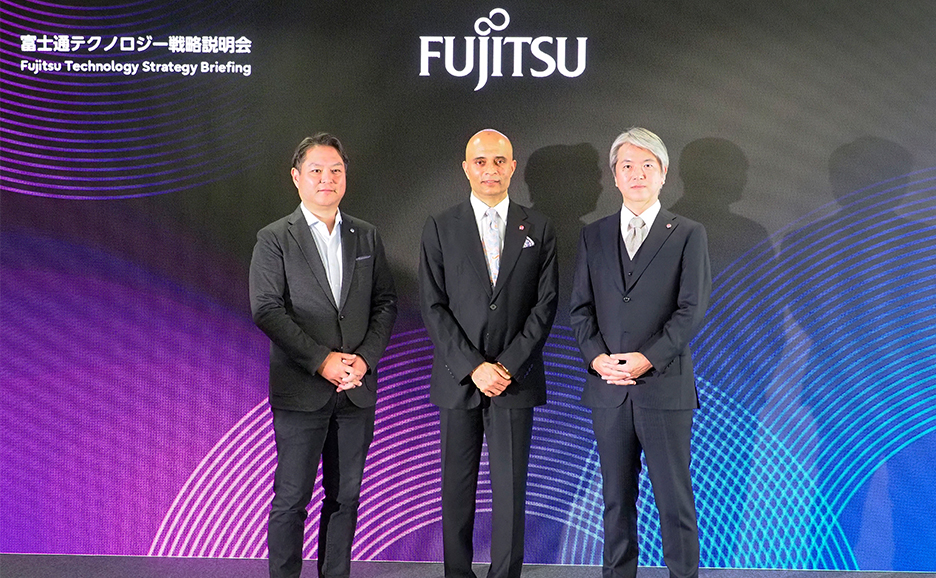Fujitsu ultrasound AI outperforms sushi chef’s judgement on fattiness of tuna

Article | 2025年6月23日
4 minute read
Tuna is undoubtedly one of the most popular fish in Japan. In particular, high-end bluefin tuna is especially enjoyed by consumers as a dish for celebrating special occasions. In 2025, a sushi restaurant chain in Tokyo offered $1.3 million for a bluefin tuna at the annual New Year auction.
Sonofai Inc., a Japanese startup, has focused on high demand for more affordable tuna. The company developed an automated inspection device "SONOFAI T-01" equipped with Fujitsu's AI technology to determine the fat content of frozen albacore tuna.
Here's more on Fujitsu's cutting-edge technology and how the company collaborated with a new partner company.
Newly developed AI device under spotlight
The process to assess a frozen albacore with “SONOFAI T-01” requires about 12 seconds.
An employee with Sonofai Inc., a startup based in Shizuoka Prefecture, places a hard-frozen albacore on a machine. It is then conveyed through a gate where four mechanical arms reach out to hit the target with an ultrasound. In the blink of an eye, the AI judges the level of fattiness in three grades, and the result appears on the screen.
Sonofai Inc. revealed its SONOFAI T-01 to the media in April 2025 at Fujitsu headquarters in the City of Kawasaki, Kanagawa Prefecture. More than 30 media outlets flocked to cover the demonstration of the new AI machine.

The capability of SONOFAI T-01 adds value to albacore tuna
Fujitsu Limited, a food processing equipment manufacturer called Ishida Tec Co., Ltd., and Tokai University collaborated to develop SONOFAI T-01. Sonofai is a business carved out from Ishida Tec to handle sales.
Fujitsu provided its unique ultrasound analysis AI technology. The machine projects ultrasound onto frozen albacore tuna. The AI analyzes the sound reflection data from inside the tuna and then evaluates the fattiness on three levels.
Fujitsu developers designed the device for albacore tuna, which is the smallest of the six types of tuna that are caught around Japan, about 50 to 100 centimeters in length. In 2021, the catch accounted for about 10% of all tuna caught in the world (about 206,000 tons). That is about four times the amount of the most expensive bluefin tuna (49,000 tons). (*1)
Albacore tuna is mainly processed into canned products. However, in recent years, it has gained a reputation and is increasingly in demand for use in sushi chains and as sashimi in supermarkets. These raw albacore are called “Bintoro” or “Toro Bincho” in Japanese and are sometimes twice as expensive as canned tuna.
(*1)Japanese Fisheries Agencies. “Katsuo, Maguro-rui ni kansuru kokusai josei ni tsuite [International situation regarding bonito and tuna].” June 2024. (Access April 15, 2025).
https://www.jfa.maff.go.jp/j/tuna/attach/pdf/index-28.pdf.

Technical breakthrough of ultrasound analysis to assess frozen fish
Sonofai CEO Hisashi Ishida has sensed a growing need in the local seafood processing industry to increase albacore for raw consumption. Shizuoka Prefecture, where Ishida’s company is based, has the largest catch of albacore tuna in the country.
To service this growing need, it was necessary to work out a more efficient way to find well-fattened fish. Conventionally, artisans would use a band saw to cut off the tail of the tuna to look into the cross-section and sort out good fish, which took about 60 seconds per fish. Albacores landed in such large numbers that the artisans couldn’t inspect all of them.
“Accurately inspecting all fish would take too much time and personnel,” said Ishida. "If this could be solved, producers and distributors would be able to have more products of high additional value. For consumers, it will be more likely that they will get the taste they prefer.”
(*2)Shizuoka Prefecture. “Minamimaguro (reito), Binnaga (reito), Kihada (reito), Mekajiki (reito), Katsuo (reito) no jojomizuageryo nihonichi [Southern bluefin tuna (frozen), albacore tuna (frozen), bigeye tuna (frozen), yellowfin tuna (frozen), swordfish (frozen), bigeye swordfish (frozen), and bonito (frozen) are the largest catch in Japan.]” Shizuokaken no nihon ichi My Shizuoka nihon ichi 100 [A hundred Japan’s No.1 in Shizuoka Prefecture.] Jan 31, 2025. (Access April 15, 2025)
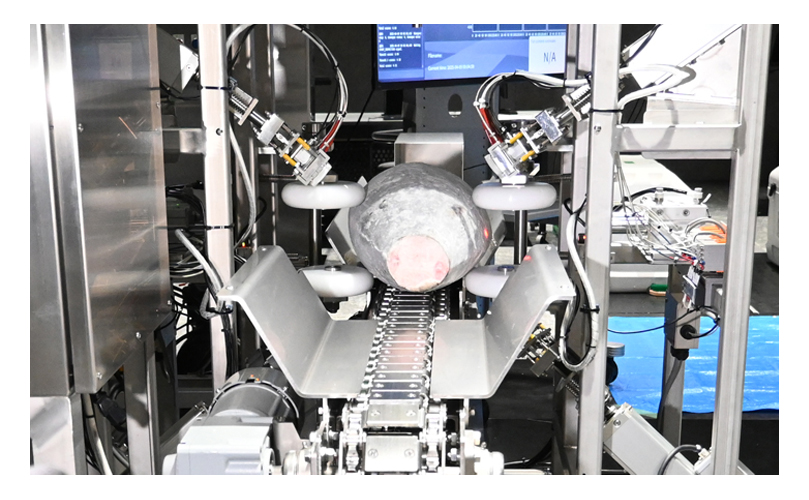
Fujitsu addressed the challenge of sorting large quantities of albacore using ultrasound analysis AI technology, which analyzes sound data reflected from objects. The technology is one of Fujitsu Kozuchi's AI services.
Albacore tuna are frozen on board the ship and unloaded at the port while frozen. Until now, analysis of frozen fish has been considered more difficult than that of fresh fish. This is because the ultrasound waves attenuate rapidly due to the presence of ice crystals in a fish, and noise mixed in the data made it harder to evaluate.
Fujitsu researchers studied approximately 200 frozen tuna samples and found that they can analyze frozen albacore tuna at a frequency of 500 kilohertz. They went on to develop a new algorithm utilizing three types of AI to filter out noise and allow accurate assessment of the fat content.
Comparisons between AI analysis and sorting by skilled artisans found that AI was slightly more accurate in its judgment.
The advantage of utilizing ultrasound AI is that it enables the screening of a large number of fish quickly. While an artisan needs approximately 60 seconds per fish, the SONOFAI T-01 accomplishes the task in 12 seconds, resulting in an 80% reduction in time. In other words, the SONOFAI T-01 can measure all fish caught.
Professor Keiichi Goto of Tokai University's School of Marine Science said that the technology is revolutionary.
"In the method of cutting off the tail of an albacore for connoisseurship, it was difficult to distinguish color differences. Conventionally, craftsmen only observed the fattiness around the tail, and the fattiness in the body of the fish was guesswork. This technology can visualize information on the inside of frozen fish."
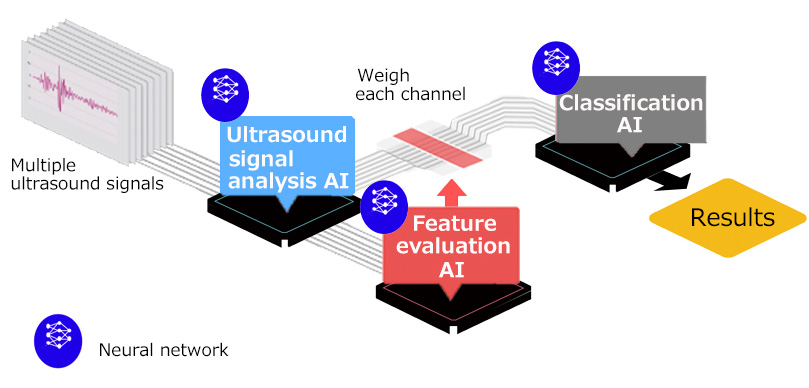
Ishida says that the machine is notable in improving the working environment by reducing the hazardous work of cutting tails. He added that workers no longer need specialized skills for the process.
SONOFAI T-01 is expected to be updated also to sort different species of fish, including frozen yellowfin and bigeye tuna, which are widely distributed.
Co-working with partners to deliver Fujitsu technology to new markets
The collaboration to launch the new machine began when a local stakeholder read an article published by Fujitsu and Ishida Tec on a media platform “note.” Fujitsu had been seeking a company that would utilize its technology.
AI Strategy & Business Development Unit head Hideto Okada says that they had to clear many hurdles to implement the technology in society.
“In the case of finding a collaborative partner in the IT industry, there are accelerators and venture capital communities in the United States and we can find schemes to match up with companies. However, existing schemes just aren’t enough to look for a partner outside our business,” says Okada.
Okada also noted that the speed of delivering technology is crucial in highly competitive AI. “We are proud that we were able to go from the start of the research to social implementation in three years,” Okada says.
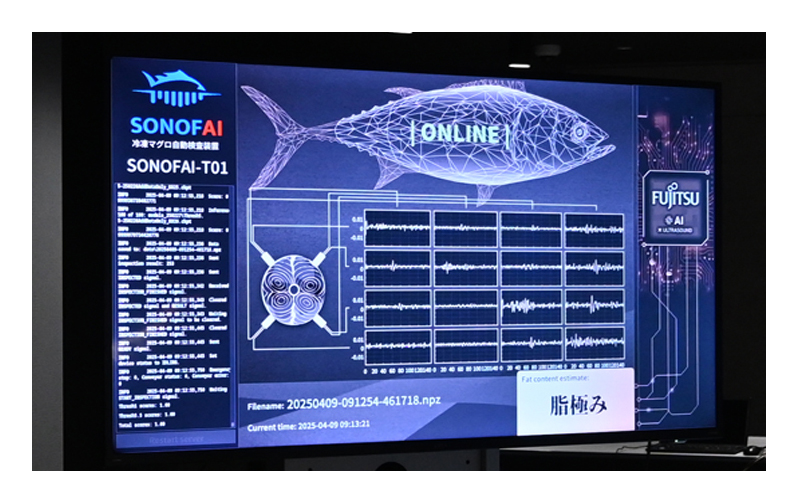
Fujitsu has published online its advanced technologies free of charge on the “Fujitsu Research Portal.” (https://en-portal.research.global.fujitsu.com/) It aims for the technologies to be utilized by many companies beyond the boundaries of the industry. More than 50 AI technologies related to data analysis and generative AI are available.
Fujitsu launched the portal website as part of its efforts to keep pace with the ever-increasing speed of technological evolution. Fujitsu used to commercialize its developed technologies in-house, but the company is now seeking ways to make its technologies available for use in society faster.
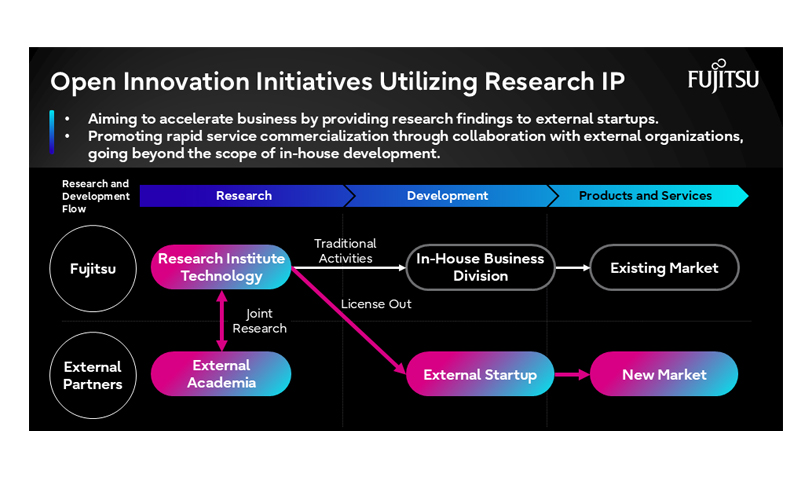
The SONOFAI T-01 is a new example of how Fujitsu was able to match its technology with a partner company directly.
“We would like to see our patented technology used more by new partners, including startups. We want to increase the number of partnerships like the one we have with Sonofai,” Okada added.
The SONOFAI T-01 is to go on sale in June 2025 to seafood processors and fishing cooperatives. The company also plans to expand overseas, aiming to sell 100 units over the next five years.


AI Agents and the Transformation of the Financial Industry

Fujitsu Tackles Proprietary AI: AI + World-Leading Tech
This report summarizes a technology strategy briefing held in December 2024, focusing on cutting-edge technologies and their business applications. Key areas covered include: generative AI frameworks, multi-agent AI systems, and quantum computing. Specific use cases illustrating the practical business applications of these technologies were presented.
